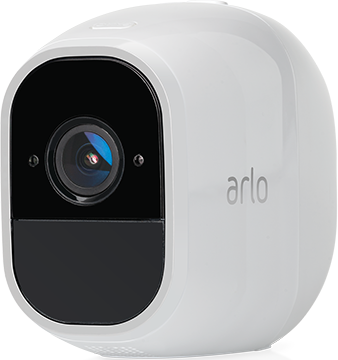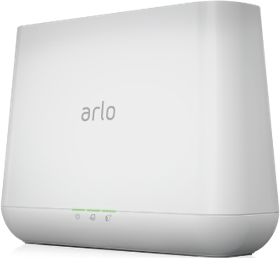- Subscribe to RSS Feed
- Mark Topic as New
- Mark Topic as Read
- Float this Topic for Current User
- Bookmark
- Subscribe
- Printer Friendly Page
- Mark as New
- Bookmark
- Subscribe
- Mute
- Subscribe to RSS Feed
- Permalink
- Report Inappropriate Content
Not sure this is of interest to the Arlo community, but I've been sucessful in implenting Arlo Pro 2 cameras (12) accross a rather large area (10 acres) using a combination of wifi "radios" (NetgearTP-Link AC1200) and multiple Arlo base stations. I've also been able to get a base station working at a remote location using a solar/12V battery "base". If there's sufficent interest, I'll post the how-to. I've always enjoyed the ability to read the posts and benefit so I thought I'd see if there's any interest in what I've employed.
- Related Labels:
-
Installation
- Mark as New
- Bookmark
- Subscribe
- Mute
- Subscribe to RSS Feed
- Permalink
- Report Inappropriate Content
I live on a farm and would be most interested in how you extended your range! thank you!
- Mark as New
- Bookmark
- Subscribe
- Mute
- Subscribe to RSS Feed
- Permalink
- Report Inappropriate Content
By way of explanation, we live on a 10 acre horse ranch and wanted to get Arlo cameras near the horse barn, which is about 800 feet from our house, where the main internet connection point (router) resides. It turns out the key to this is the use of ever improving wifi "radios". In particular I've now used multiple generations of Netgear's TP-Link extenders (CPE510) and lately (AC1200). They work to beam your wifi connection across rather large distances. You set up the first radio a the "root" and the second radio as the "client". Providing the "client" has an ethernet port, you can connect an Arlo base station which allows you to have additional arlo cameras within ~200-300 feet of the new base station.
If your "far away" client station does not have electricity, you can set this whole station up to run off of 12V/solar. Ive attached a photo of a 100W solar package which contains the "client" radio/network extender, the arlo base station, the solar controller and a travel inverter which steps the 12V battery voltage (solar) to AC to run the network "client/extender" and the arlo base station. I discovered this rather inefficient setup requires around 1.8A of current or about 25AHr of battery capacity to make it through the night. I'm presently working to eliminate the inverter and use a DC/DC buck converter to step the battery 12V to the voltage required for the client radio (6V) and the arlo base station (12V). You might think it odd to use a buck converter to setp 12V to 12V but the converter allows for variable input so if the battery drops/rises the converter will ensure a steady 12V output. I also increased the battery capacity to a typical solar 100AHr battery, so I expect a much higher efficency and buffer. I'll follow up on this post to let everyone know my new power consumption.
Also, I should point out that the "root" and "client" radios can be daisy chained to allow for ever greater distance hops. In fact they now support "meshing" which is really neat as the whole set of radios/extenders form one wifi access point covering a really large area.
The system has been up and running now for a couple of weeks an is performing really well. Very happy with it and simply working to improve the solar station to reduce the power requirements.

- Mark as New
- Bookmark
- Subscribe
- Mute
- Subscribe to RSS Feed
- Permalink
- Report Inappropriate Content
Update to my earlier post. I pulled out the AC/DC inverter and configured both the wifi extender and ARLO base station to work with the 12V battery directly (using buck converter boards). I've attached a couple of photos to this post. You're looking at a very small travel wifi extender with the very small buck converter circuit board glued to the side. They are up and running as I write this and the total power consumption has dropped to 1.1A or about 50% of what I had before with the AC/DC inverter. As expected the efficieny importantly improved.
So, good news, as the solar battery requirements can be dropped to whatever you feel your solar capacity can deliver. The 100AHr battery I installed is clearly overkill, especially for northern California where the sun shines a lot. That said, it we get several days of no sun, I'm good to go with this rather large capacity battery.

- Mark as New
- Bookmark
- Subscribe
- Mute
- Subscribe to RSS Feed
- Permalink
- Report Inappropriate Content
Thank you for the detailed information!
- Mark as New
- Bookmark
- Subscribe
- Mute
- Subscribe to RSS Feed
- Permalink
- Report Inappropriate Content

- Mark as New
- Bookmark
- Subscribe
- Mute
- Subscribe to RSS Feed
- Permalink
- Report Inappropriate Content
-
Arlo Mobile App
634 -
Arlo Pro 2
11 -
Arlo Smart
180 -
Before You Buy
997 -
Features
445 -
Firmware Release Notes
57 -
Google Assistant
1 -
IFTTT (If This Then That)
24 -
Installation
1,150 -
Online and Mobile Apps
865 -
Service and Storage
317 -
SmartThings
37 -
Troubleshooting
6,335

